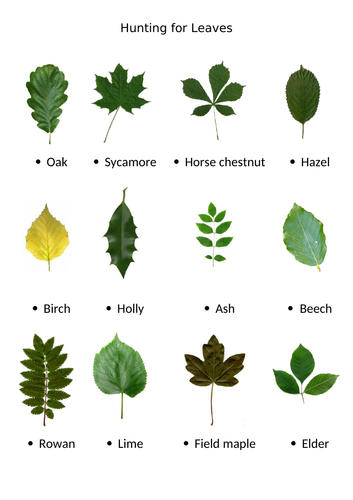










In this fourth lesson pupils should be taught to:
- Explore possible ways of grouping flowering plants and non-flowering plants.
- Recognise plants can be grouped into categories such as flowering plants (including grasses) and non-flowering plants, such as ferns and mosses
- Identify different trees by observing differences in their leaves.
- Use simple keys to identify leaves from local trees.
The following summary is based on notes and guidance from the National Curriculum.
The pupils will be classifying living things and presenting data in a variety of ways to help in answering questions, discussing their findings with peers and the staff. The teaching method ‘snowball fight’ could be used to gain an understanding of the students current knowledge about different plant species.
The pupils have the opportunity to group and classifying living things, carrying out simple comparisons using a simple table and fact sheet and by investigating a local wildlife area / forrest school area. The students can then use the facts in their tables to complete the Venn diagrams. They can also be given the chance to work independently by finding out more facts using secondary sources of information. In this lesson students were split into small groups to investigate the outdoor area / plant species. Each group was either led by a teacher / TA or by an able student to make the activity more engaging and to make sure the table contains all the facts needed for the next activity.
The table named indentifying different plants and the plants themselves can be used as a stimulus to talk about criteria for grouping, sorting and classifying. They should begin to look for naturally occurring patterns and relationships between plants that share similar features.
Pupils should explore possible ways of grouping a wide selection of living things that include plants. The students can use their plant identification tables or the fact sheets to complete the Venn diagrams and classification keys. They have been designed to allow pupils to identify differences between plant groups easily and the activities should flow, the differences between plant groups written in the Venn diagrams can be used in the boxes of the ‘yes’ / ‘no’ identification keys. The Venn diagrams are a resource to assess the pupils knowledge and for them to record the similarities and differences between different plant groups. The activities have been specifically designed to provide the scaffolding needed for pupils to put plants into groups
Pupils are given scientific words to read and opportunities to spell scientific vocabulary correctly to build their confidence and to use their growing spelling knowledge in a scientific context. The word list, phonetic sounds and definitions have been provided which could be used during their weekly spelling test.
The students will record their findings using simple scientific language and by completing keys and tables.
Something went wrong, please try again later.
This resource hasn't been reviewed yet
To ensure quality for our reviews, only customers who have purchased this resource can review it
Report this resourceto let us know if it violates our terms and conditions.
Our customer service team will review your report and will be in touch.